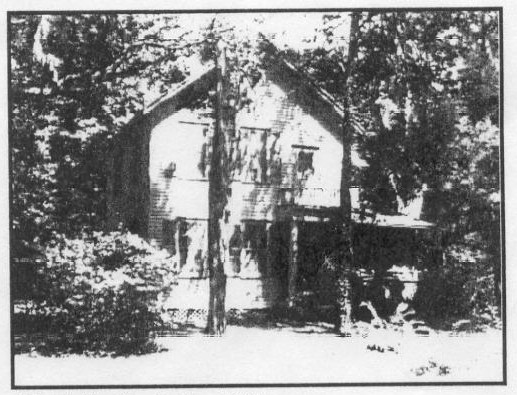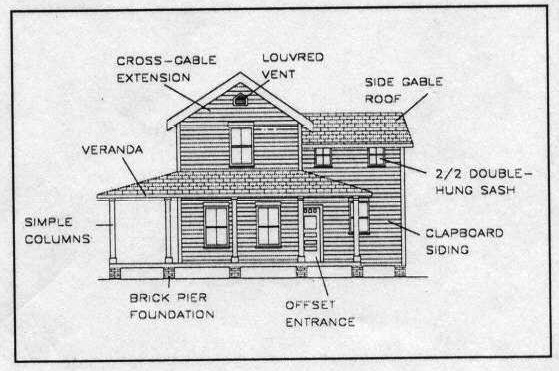
661 Mickler Road, circa 1881.

661 Mickler Road, circa 1881.
Jacksonville's expansion during the latter
decades of the nineteenth century was in large part due to its evolution
as a rail center. By the mid- 1880s the city had become one of Florida's
main rail hubs, with lines reaching out in all directions, west to Lake
City and Cedar Key, north to Fernandina and Savannah, and south to St.
Augustine. In May 1888 the Jacksonville, Mayport and Pablo Railroad and
Navigation Company (JM&P) began rail service from the Arlington Road
landing to Mayport. The line ran from the river in a diagonal line to Egleston
Heights, its first stop. It then turned eastward in a wide curve, plunging
through the pine woods on its way to Verona, Cohasset, and Gilmore before
reaching the ocean at Burnside, north of Pablo, or what is now Jacksonville
Beach.
In 1889 a depot for the line was constructed
at Egleston, east of what is now Floral Bluff, on property donated by a
local landowner, O.H.P. Champlin. Eglestgn was laid out in the early 1880s
by Champlin, who gave it his wife's maiden name. The plat, filed in June,
1888, reveals an eighteen-block subdivision of varying-sized and shaped
blocks located essentially east of Lake Lucina. Among the original property
owners shown on the plat itself were Champlin, Albert C. Frieseke, Mrs.
Sarah Warren, and Thomas M. Taylor. Champlin promoted the community in
New Jersey, attempting to persuade his former neighbors to create a second
Ocean Grove in Arlington. One who responded was the widow of a Methodist
minister, who in honor of her late husband financed construction at Egleston
Heights of a church, completed in 1889. Named the John E. Inskip Memorial
Methodist Church, the facility endured until 1920, when the congregation
moved to its present location one-half mile south on University Boulevard.
The church was one of four buildings standing
within Egleston Heights in early 1889. Champlin built a house on Lake Lucina
next to one constructed by his son-in-law, Albert Frieseke. A Captain Warren
and his wife owned the other house in the community. Construction of the
depot soon led to further development. A post office, school, several stores,
and a hotel followed. By late 1890 a score of buildings lined the small
community's few streets. A dozen more were under construction. Champlin
successfully organized a Chatauqua Assembly in Egleston Heights that attracted
many visitors to the community. Meetings were held at the church and the
hotel, which in the 1891-92 winter season reportedly filled with guests.


